SYNOPSIS:
A frustrated music journalist befriends an aging classical pianist, only to discover that the musician has supernatural designs on his body.
REVIEW:
Occult themed films are tricky business. Often the menace, be it Satan or some lesser minion, remains unseen, utilizing devoted mortals to carry out their schemes. The best occult films don’t rely on shock, opting instead for a constantly growing sense of dread. The two finest examples are Night of the Demon (1957) and Rosemary’s Baby (1968). Both are suspenseful and intelligent films that avoid sMhowing the beast itself- though producers added a giant Satan to Night of the Demon without director Jacques Tourneur’s consent, making him mad as hell.
1971’s THE MEPHISTO WALTZ was clearly inspired by the success of Rosemary’s Baby. It represents an early example of a major studio stepping into the macabre territory previously staked by independent producers. It was adapted from the novel of the same name by seventies airport bookrack ace, Fred Mustard Stewart. The title is taken from a composition by Hungarian composer Franz Liszt, who’s life was chronicled in the 100% accurate and completely level headed Ken Russell film Lisztomania (1975). The Mephisto Waltz’s ad campaign leaned heavily on two striking images— a kneeling nude woman surrounded by candles and a dog with a human head. Ironically both are little more than cutaways in the film. But there are plenty of memorable visuals in the first half.
It’s all about Myles, a frustrated journalist and failed musician falling under the spell of Duncan Mowbray Ely (Curd Jürgens), a charismatic classical pianist. Myles wife Paula (Jacqueline Bisset) does not approve of his new big boy crush, especially when she meets Duncan’s elegant but creepy daughter Roxanne (Barbara Perkins) and the musician’s entourage of wealthy and eccentric friends. It turns out Duncan is dying of Leukemia but plans on inhabiting Myle’s body after his demise. He intends to accomplish this through the use of black magic and isn’t about to let Paula stand in his way.
Let me say right off that The Mephisto Waltz looks fantastic with top-notch camerawork and art direction. This was the first theatrical film produced by TV kingpin Quinn Martin. Director Paul Wendkos was also a television veteran, having helmed episodes of The Invaders (created by Larry Cohen) and The Rifleman (often written by Sam Peckinpah). Martin and Wendkos go out of their way to prove they’re not TV hacks by serving up a barrage of imaginative camera work and clever visual devices. There’s even a very 1970’s masquerade party that’s right up there with Russ Meyer’s Beyond the Valley of the Dolls Z-Man Barzell bash. The high point is when Roxanne sashays through the festivities leading a Labrador retriever that’s wearing a human mask- an image so creepy it actually made the poster. By the way I think The Mephisto Waltz contains cinema’s first and last vicious Labrador Retriever- probably the only breed sweet natured enough to wear that crazy mask. A Doberman just wouldn’t go for that nonsense.
But the filmmaker’s visual coup d’état was casting Jacqueline Bisset, one of the 1970’s most stunning actresses. The cameraman clearly loved her, framing and lighting her close-ups like fine art. But this adoration makes things tough on leading man Alan Alda, who was still a year away from achieving superstardom on MASH. While Bisset radiates like a diamond Alda photographs more like a potato. It’s really not his fault, it’s just that every time they appear onscreen together as man and wife you can’t help but think… him? Alda just looks odd, with stooped shoulders and slouched posture. His character comes across as bitter from the outset, which makes it difficult to muster any sympathy for Myles.
Once the soul swapping happens Bisset and the lovely and talented Barbara Perkins start vying for Alda’s affections… him? Perkins plays her part nicely, assisted by some great outfits. This film and the previous year’s underrated The Kremlin Letter (1970) proved that Perkins had range and deserved better than forgettable fluff like Valley of the Dolls (1967).
Curd Jürgens plays the scheming pianist with panache but it always feels like he’s rehearsing for his future role as a Bond villain in The Spy Who Loved Me (1977) right down to wearing quasi-futuristic Nehru styled jackets.
If I’ve made this sound like the greatest film you’ve never seen, well I’m about to do a slight one-eighty. For all its visual splendor and terrific start The Mephisto Waltz runs out of steam at the halfway mark. There just isn’t enough meat to the script to keep it humming. B-movie lynchpin Bradford Dillman pops up about this point, giving a very eccentric performance as Roxanne’s drunken ex-husband who married her when she was fifteen! But Bisset’s character still finds him attractive enough to sleep with. Today we’d call him a pedophile, but in 1972 he was just considered a lucky bastard! The film stays in neutral until the last fifteen minutes when it suddenly wakes up and reminds you why you enjoyed the first half so much.
So in closing I’d say The Mephisto Waltz is a nice curiosity piece that won’t hold your interest tightly enough to be truly memorable. It’s an adequate VOD choice because you can enjoy the first half, go make some dinner without putting it on pause and come back for the finale.
And to wrap things up let me say that putting a scary human mask on your dog only sounds like a cool idea. The dog will bite you and your friends will call the humane society- you’ve been warned.
 Horror News | HNN Official Site | Horror Movies,Trailers, Reviews
Horror News | HNN Official Site | Horror Movies,Trailers, Reviews
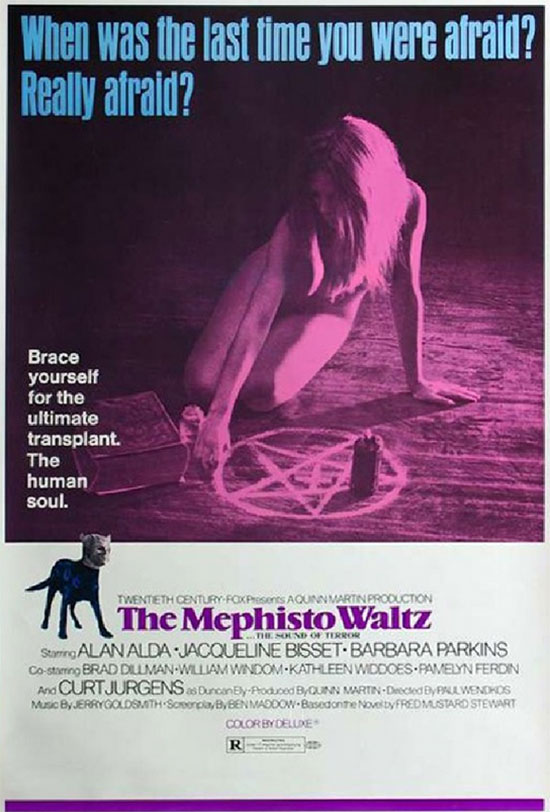
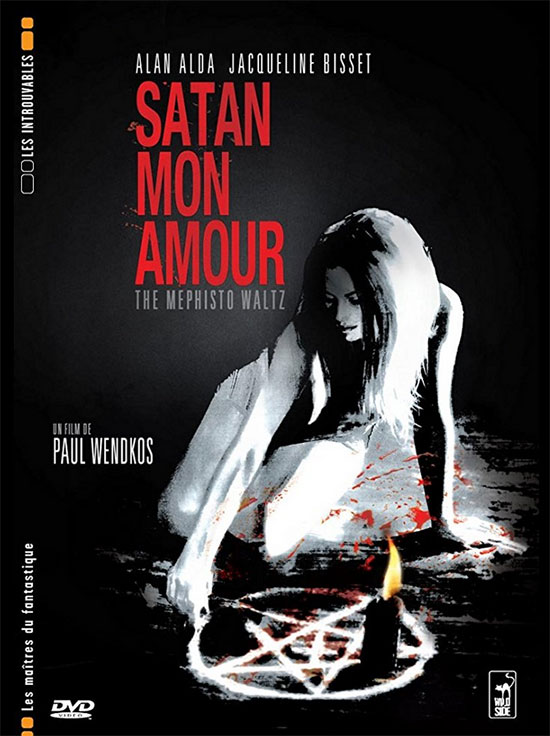

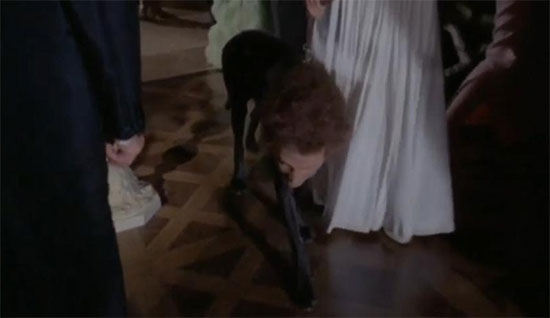
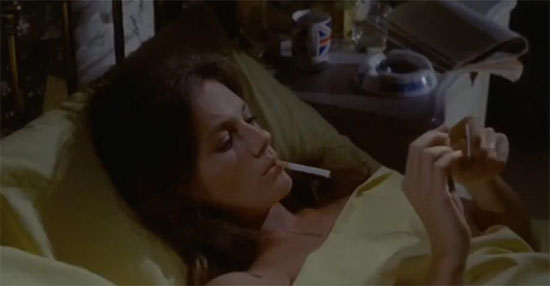
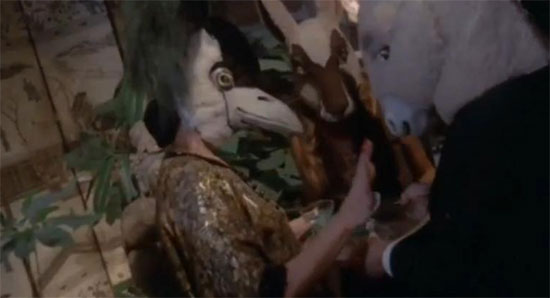
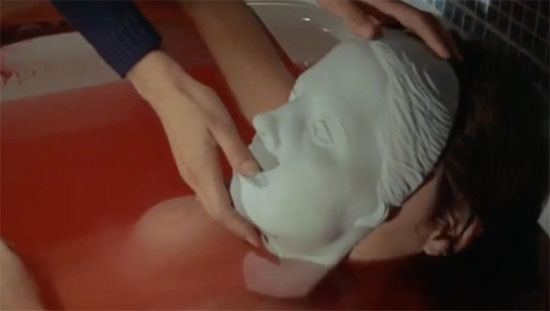
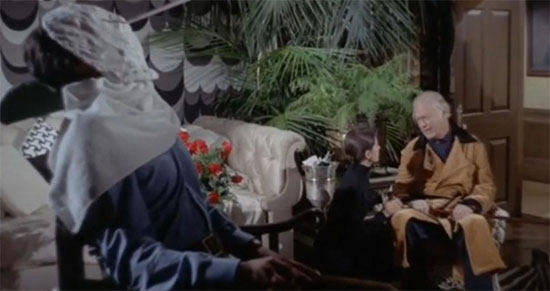


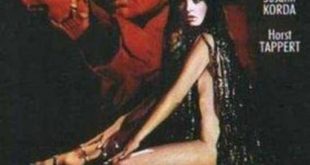

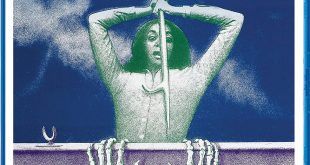


You need to learn some proper grammar. You wrote “book of the same name.” It should properly read: “book of the same title.” Books have titles, not “names.”
semantic quandary, I’m always intrigued by these subtle lil recommendations that come over. And then of course the force that drives them…………